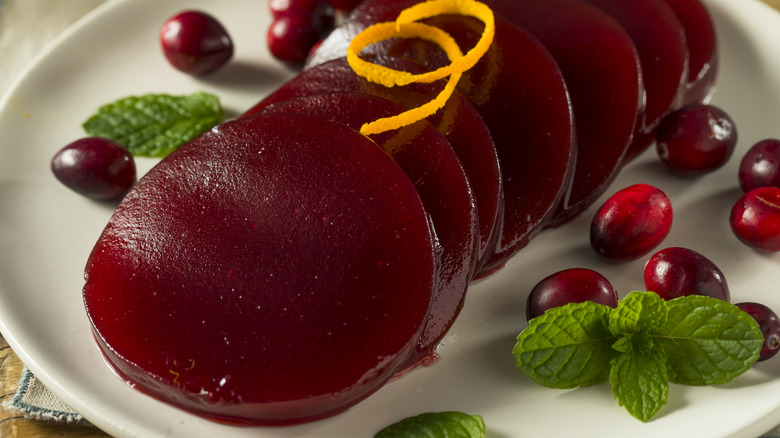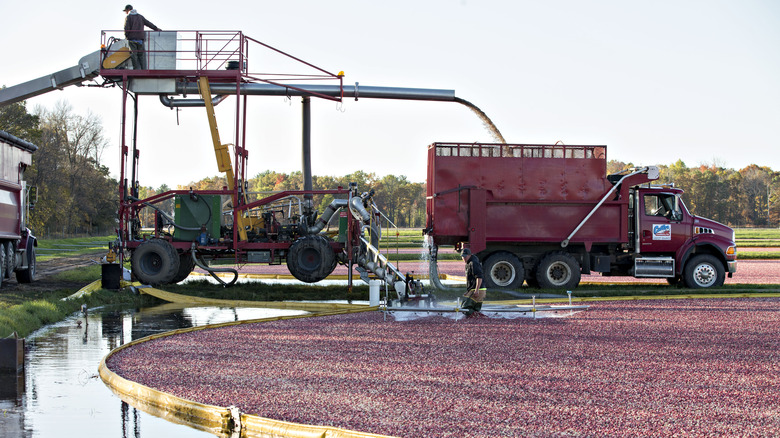How Ocean Spray Turns Cranberries Into A Jellied Sauce
Everyone who's ever sat down to a Thanksgiving dinner knows all the traditional elements to expect: Turkey, stuffing, potatoes, and cranberries in their purest form, a cylinder of jelly. But how, you might ask, do we get that delicious cylinder of tart, fruity sauce? Despite what your 5-year-old cousin might think, they don't grow in that neatly ridged shape — there is more of a process at hand and it starts in a bog.
The New York Times notes that despite the "bog" title, the idea that cranberries grow in water is a common misconception. The berries grow on vines in marshy, lowland "beds," according to How Stuff Works. The image most people call to mind when they think of the fruit doesn't actually happen until harvest time from September to November when the bogs are intentionally flooded with about 18 inches of water and the buoyant berries float to the surface.
The next day, farmers wade out into the bogs of floating berries with rakes and harvesting machines known as water reels (per Today) and loosen the berries from the vines. With the fruit now free-floating, the harvesters use floating bumpers (or containment booms), the same kind, NYT explains, which are used to contain oil spills, to corral the berries in the water and push them to a conveyer at the edge of the bog which loads them into trucks to take for processing.
Farm to can
The New York Times reports that once the cranberries are harvested, they are taken to a processing facility to be cleaned and packaged. Ocean Spray, the cranberry production giant that is actually a collective of over 700 small family farms, operates nine such facilities in the U.S. (per Ocean Spray). Once at the facility, the berries are washed and sorted for quality. The berries that meet Ocean Spray's standards are frozen until they are ready to be processed.
When processing time comes, Today explains that the berries are separated and mixed with more fresh berries before going through a machine that purees them and sifts out the seeds and skins. The New York Times notes that this puree is then blended with a second high-pectin puree made from previously processed skins and seeds, which helps create the gelatinous texture. It is then mixed with corn syrup and lots of sugar. According to Ocean Spray, a single, 14-ounce can of jellied cranberry sauce contains about 150 grams of sugar, 144 grams of which is added sugar.
The heated cranberry sauce is then poured into cans, which are sealed with steam and cooled in a water bath before being labeled and packaged for shipping. Interestingly, 11 Alive explains that the cans are labeled upside down so the jelly can settle on the shelf. An air pocket forms in the "top" of the can allowing the perfect cylinder of cranberry goodness to more easily plop out into our serving dishes.

